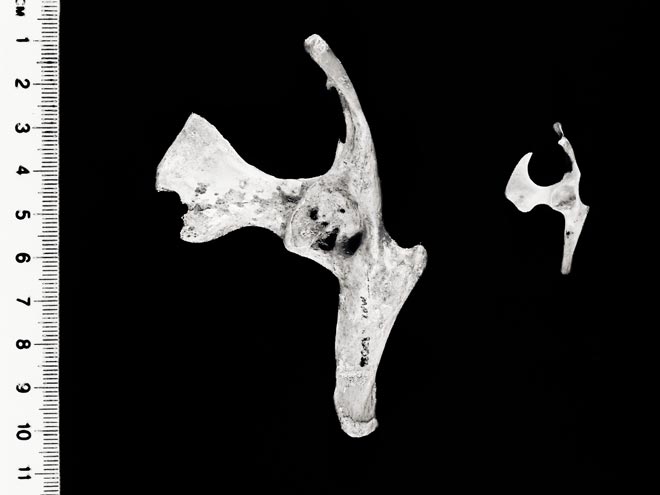
The pelvic bone of the extinct giant iguana is pictured here with the much smaller pelvic bone from a still-living iguana species. The giant iguana’s remains were found in sediments on the main Fijian island of Viti Levu. This iguana would have measured around half a metre from the tip of its snout to its vent. It is thought that it became extinct shortly after human arrival in Fiji – around 3,000 years ago.
Using this item
Palaeofaunal Surveys
Photograph by Jim Palmer and T. H. Worthy
This item has been provided for private study purposes (such as school projects, family and local history research) and any published reproduction (print or electronic) may infringe copyright law. It is the responsibility of the user of any material to obtain clearance from the copyright holder.








Add new comment